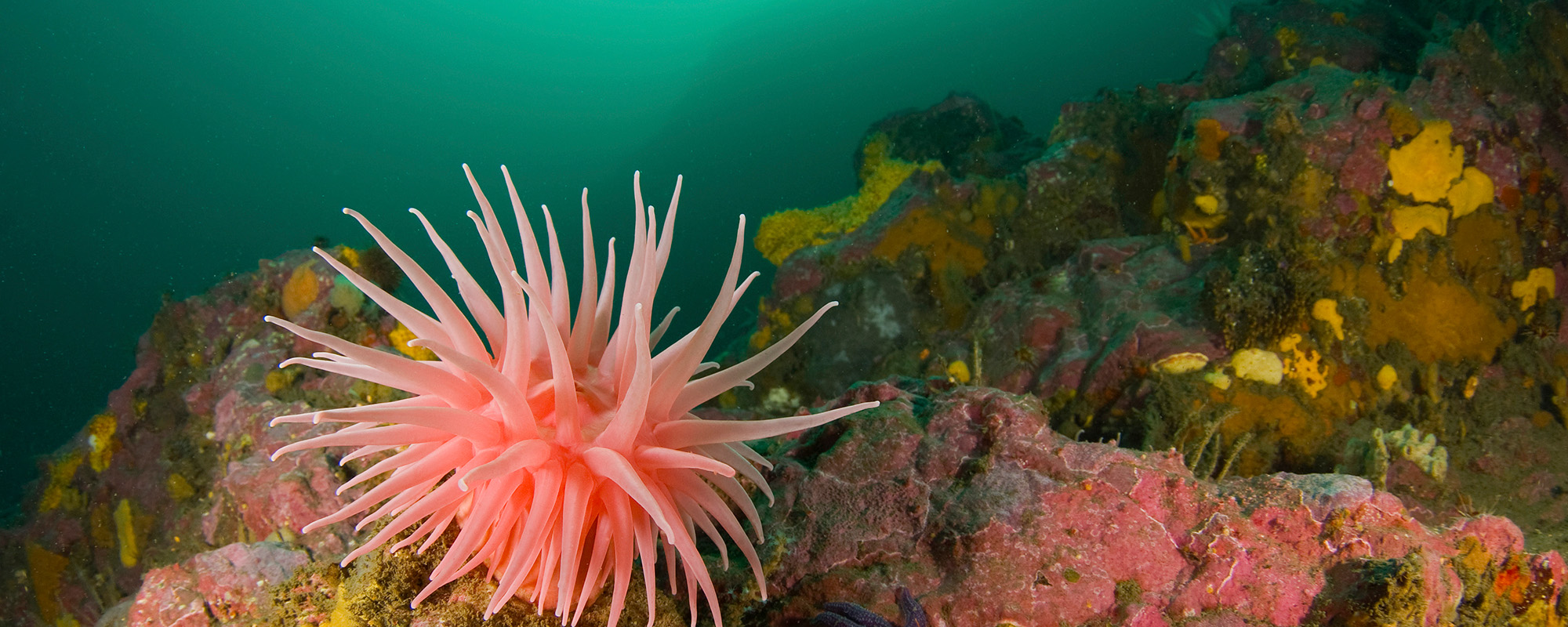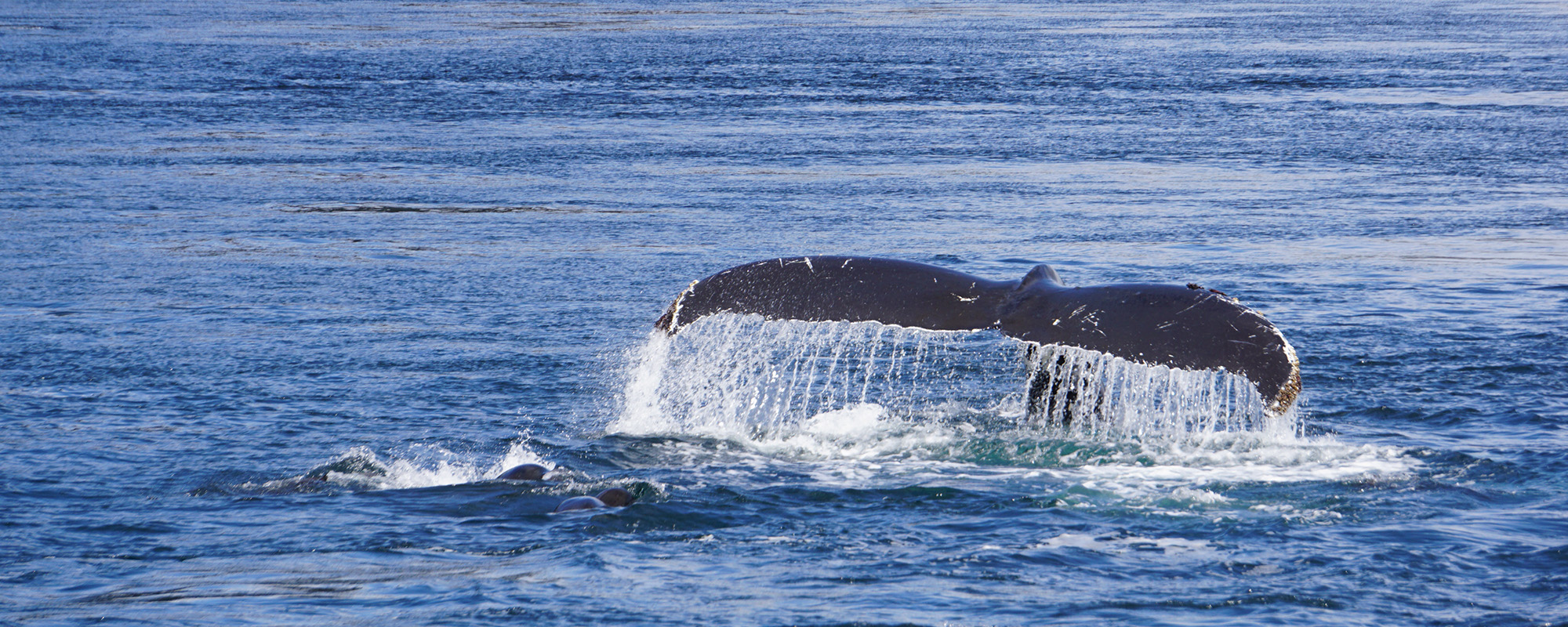
Photo: Eduardo Sorensen
Protected Areas: A Contribution to Chile and the World
The protected areas of Patagonia cover a vast territory, including terrestrial ecosystems and their coastal-marine portions, encompassing 55% of the southern territory under some conservation category, such as national park or national reserve. Additionally, strictly marine areas account for 41% of the protected ocean surface.
These are ecosystems of high pristineness and great endemism, set against breathtaking landscapes that offer opportunities to address the climate crisis and species extinction. Furthermore, protected areas support education, research, innovation, tourism, recreation, and many other forward-looking values.
However, the salmon farming industry poses a real threat to the conservation of these natural spaces. Currently, there are 408 salmon farming concessions granted within three national parks and two national reserves: 8 in Isla Magdalena National Park, 2 in Laguna San Rafael National Park, 313 in Las Guaitecas National Reserve, 66 in Kawésqar National Reserve, and 19 in Alberto de Agostini National Park.
Promoting the effective conservation of these protected areas must be a priority task for Chile.
Carbon Capture
According to the United Nations, the planet is no longer merely warming—it is boiling. Nature-based solutions (NbS) have proven to be the most effective and coherent path to achieving the Sustainable Development Goals and addressing the climate crisis.
The carbon sequestered by the terrestrial protected areas of Chilean Patagonia stores nearly twice as much per hectare as the forests of the Amazon. The diversity of plant, animal, fungal, and algal species is directly linked to human well-being—benefiting nearby communities, the country, and the world. However, this is not the only contribution these areas make toward climate action. In the ocean, kelp forests—particularly the giant kelp or brown algae of Patagonia (Macrocystis pyrifera)—are true heroes of the marine ecosystem: they have the remarkable ability to capture and store carbon dioxide, making them key allies in the fight against climate change. They contribute to improving air quality and keeping our oceans healthy.
It is estimated that kelp forests can generate a net carbon production of around 1,320 teragrams per year. In an area of 120 km², they could be exporting up to 17,500 tons of carbon annually.
It is believed that significant volumes of dissolved and particulate organic carbon from macroalgae forests and phytoplankton could be transformed and transported to abyssal plains more than 1,000 meters deep, where this material may remain sequestered for long periods.
Blue Carbon—that is, the ability of certain marine ecosystems to store carbon—makes the protection and restoration of kelp forests essential. Using a recent map of M. pyrifera distribution and net primary productivity estimates for its populations, it was conservatively and preliminarily estimated that these forests could contribute at least the equivalent of 0.5 TgCO₂ per year—without considering the contribution of other algae species, meaning actual capture could be even greater.
In addition, Patagonian kelp forests provide habitat, food, shelter, and breeding grounds for rich biodiversity and serve as ecological niches for endemic species. In fact, they are considered a refuge for countless organisms, especially those that are smaller and more vulnerable to predation.
However, various threats are endangering the health of these vital forests. It is crucial that we take action to protect these ecosystems before it is too late.
Beyond brown algae forests, the oceans offer other solutions, such as the so-called “fish carbon” or Oceanic Vertebrate Carbon, a nature-based solution of great importance in helping to mitigate the impacts of climate change. Marine vertebrates—such as bony fish, turtles, and whales—contribute through processes like carbon export or transport to great depths, among others. In this context, the creation of marine protected areas that preserve intact and functional ecosystems is essential for enhancing carbon sequestration in the ocean.
Estimates of the impact of whales on the carbon cycle suggest that each whale removes an average of 33 tons of carbon when it dies and sinks to the ocean floor.
Ecosystem services
The protected areas of Patagonia, as spaces that safeguard valuable biodiversity, contribute to the maintenance of unique ecosystems on the planet. Additionally, they perform functions such as purifying water, strengthening biological control, providing habitat for pollinator species, protecting soil, and regulating the climate. They help control erosion and soil formation, act as regulators and creators of nutrient cycles, and serve as ecological niches for endemic species.
Protected areas, through their ecosystem services, also make a direct contribution to the local and national economy.
For example, a recent study by Austral University quantifies the impact of protected areas for the Aysén region, concluding that the value of the ecosystem services they provide to the region is approximately USD 20 billion annually. Meanwhile, the value of ecosystem services provided by seven of its national parks in the same region is estimated at approximately USD 4.5 billion annually.
Coastal-marine ecosystems as refuges for valuable species
Chilean Patagonia has approximately 100,627 km of coastline, including 40,050 islands, numerous fjords, and channels, creating a geomorphological, hydrographic, and oceanographic complexity that makes it one of the largest mega-estuarine areas in the world.
The Patagonian Sea is also a migratory route for various species and a place where key ecosystem processes for biodiversity occur. It is a true refuge where blue, sei, right, fin, and humpback whales, as well as albatrosses, shearwaters, and terns, migrate annually. It is also the permanent residence of otters, sea lions, dolphins, porpoises, black-browed albatrosses, Magellanic penguins, and imperial cormorants.
Regarding the presence of marine vertebrates, 56 species of marine mammals have been recorded (42% of the global species richness of this group); 32 species of cetaceans, out of approximately 44 present throughout the country; 6 species of marine carnivores (sea lions, fur seals, seals, and otters). Additionally, there are at least 19 species of small cetaceans (dolphins, beaked whales, and porpoises). There are also about 109 bird species, representing 30% of the national species richness. Patagonia hosts nearly 50% of the seabirds recorded in Chile (Hucke-Gaete et al., 2021).
A particular feature of the Patagonian Sea is that it is home to one of the smallest cetaceans, the Chilean dolphin (Cephalorhynchus eutropia), the only cetacean species endemic to Chile. Fewer than 2,000 Chilean dolphins remain, a very low number compared to other species in the same genus. These dolphins prefer coastal, shallow waters influenced by rivers—areas where the salmon industry is located. Scientists warned in 2010 about the need to exclude these areas from salmon farming to protect the habitat of this unique and little-known species (Viddi et al., 2010).
On the other hand, Patagonia is essential for the survival of various whale species, whose migratory flow, however, must coexist with the nautical routes of different vessels from the salmon industry. Collisions with blue and sei whales—both classified as Endangered (EN) in the southern sea—have been recorded, and these populations likely cannot sustain additional mortalities beyond natural ones (Hucke-Gaete et al., 2005; Bedriñana-Romano et al., 2018).
Today, dolphins, whales, and other marine mammals also face risks from fishing nets and debris, as well as noise pollution from vessels, among other hazards.
Protected areas guarantee the existence of refuges for all species inhabiting these ecosystems; therefore, protecting them from industrial interventions such as salmon farming is indispensable.
Tourism and economy
Tourism is an economic activity that has been on the rise in the country, as more and more people travel to discover Chile, drawn by its stunning nature.
Our geography is so impressive and globally valued that Chile has received international awards as a top destination associated with natural landscapes, generating economic development opportunities for the country.
Protected areas contribute to the economy due to the returns they generate in local economies. According to a World Bank report, for every dollar invested in protected areas and nature-based tourism support, the economic return is at least six times the investment, potentially reaching a return of 28 dollars.
In other fields, Protected Areas offer opportunities for medicine, pharmaceuticals, archaeology, geology, botany, among many other sciences and knowledge.
The impact caused by salmon farming within our parks and reserves results in the loss of these development opportunities, which go hand in hand with the care of our natural heritage.
Protected areas have been and continue to be part of public policies promoted by all governments: they were created for all Chileans. Additionally, they are a refuge for biodiversity, a safeguard for the landscape, and heritage freely accessible to everyone.
Effective conservation of protected areas depends on containing their threats.
The salmon farming industry is not compatible within them.
News relacionadas
[Campaña] Del dirigente ambientalista Peter Hartmann Samhaber: Liberan completo informe sobre el impacto ambiental de 30 años de salmoneras en áreas protegidas de Aysén
Por: Patricio Segura El objetivo es “dar a conocer, transparentar y evaluar la ubicación e impactos de las concesiones salmoneras en las áreas protegidas de la región de Aysén, considerando aspectos ambientales y normativos”; “identificar y analizar la distribución,...
[El Divisadero] Salmoneras en áreas protegidas de Aisén
Por: Peter Hartmann, Coordinador Coalición Ciudadana por Aisén Reserva de Vida (Leer columna en El Divisadero) El título de esta columna también lo es de un documento - informe de una investigación que nos tomó más de dos años de trabajo, con hartos contratiempos, y...
[Patagon Journal] Lanzan una nueva campaña para acabar con la salmonicultura en las áreas protegidas de Chile
Por Francisca Lopez Espinoza [Leer noticia en Patagon Journal] El mes pasado se formó una nueva coalición de 37 organizaciones chilenas, denominada Protected Areas Defense Alliance, para lanzar la campaña "Salvemos la Patagonia", en respuesta a un informe de la...

Foto: Javiera Valencia
![[Campaña] Del dirigente ambientalista Peter Hartmann Samhaber: Liberan completo informe sobre el impacto ambiental de 30 años de salmoneras en áreas protegidas de Aysén](https://www.salvemoslapatagonia.cl/eng/wp-content/uploads/2024/12/tc_archive_acuicultura_dsc3235-400x250.jpg)
![[El Divisadero] Salmoneras en áreas protegidas de Aisén](https://www.salvemoslapatagonia.cl/eng/wp-content/uploads/2024/12/tc_archive_acuicultura_dsc0618-400x250.jpg)
![[Patagon Journal] Lanzan una nueva campaña para acabar con la salmonicultura en las áreas protegidas de Chile](https://www.salvemoslapatagonia.cl/eng/wp-content/uploads/2024/09/patagonjournal-400x250.jpg)